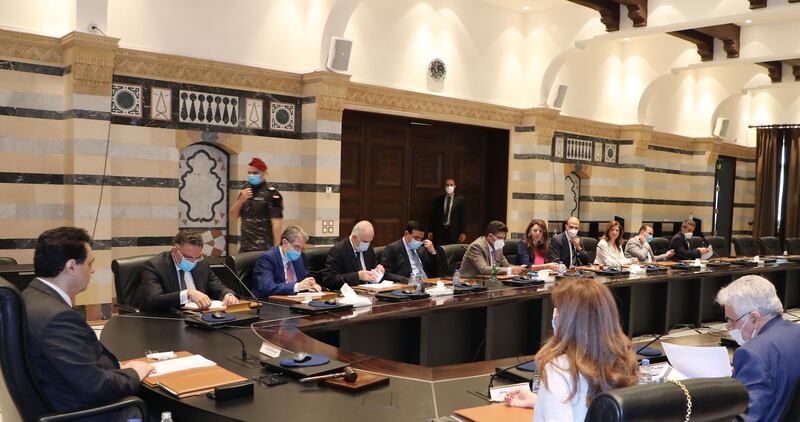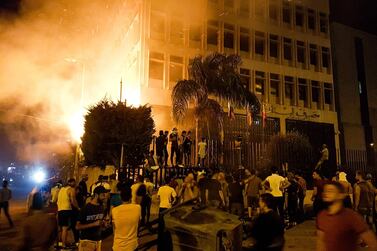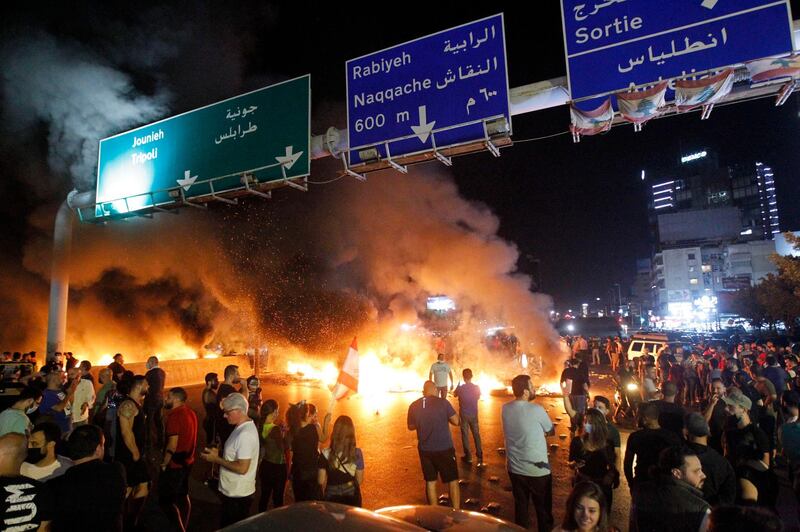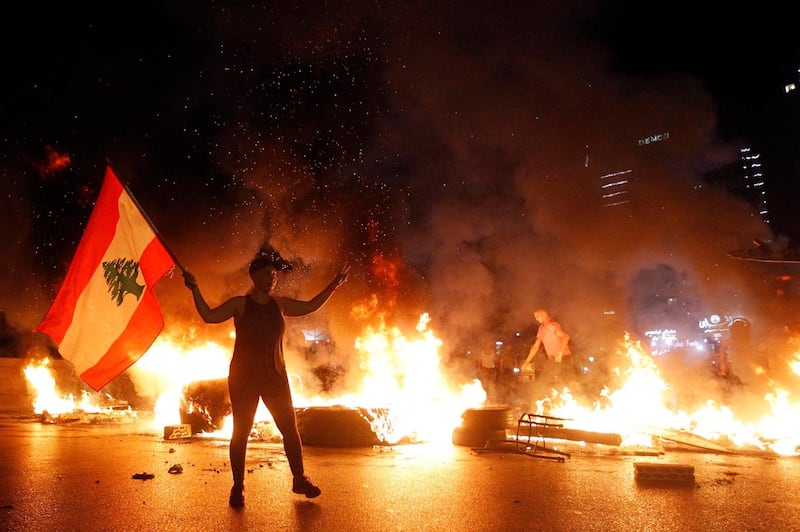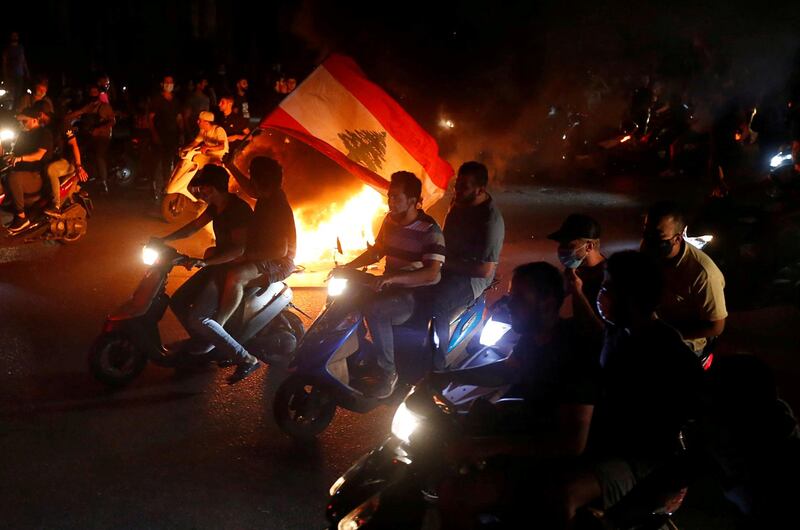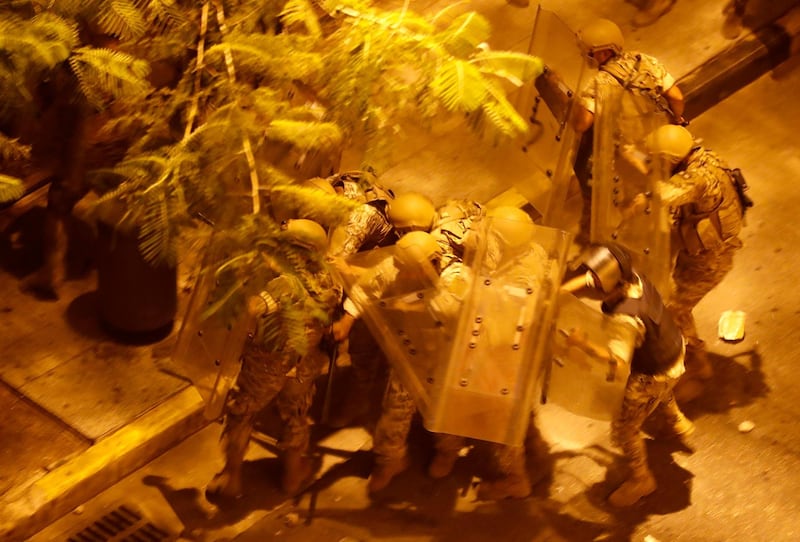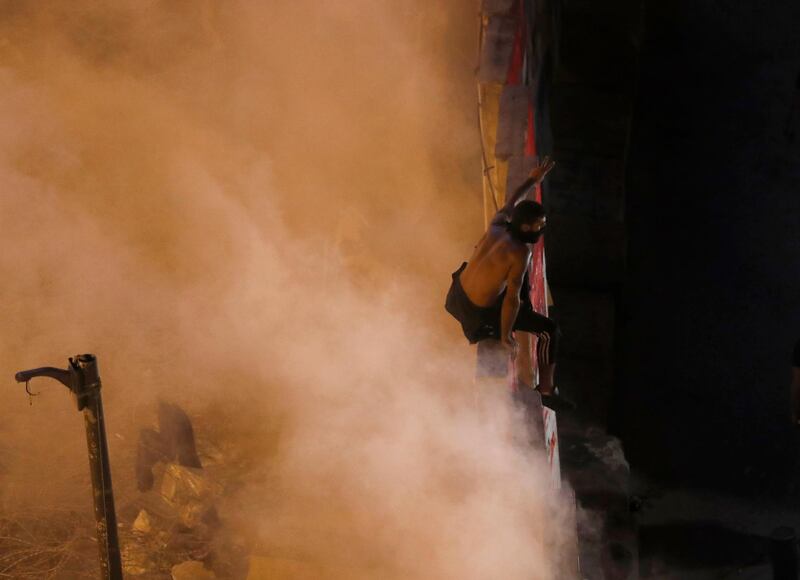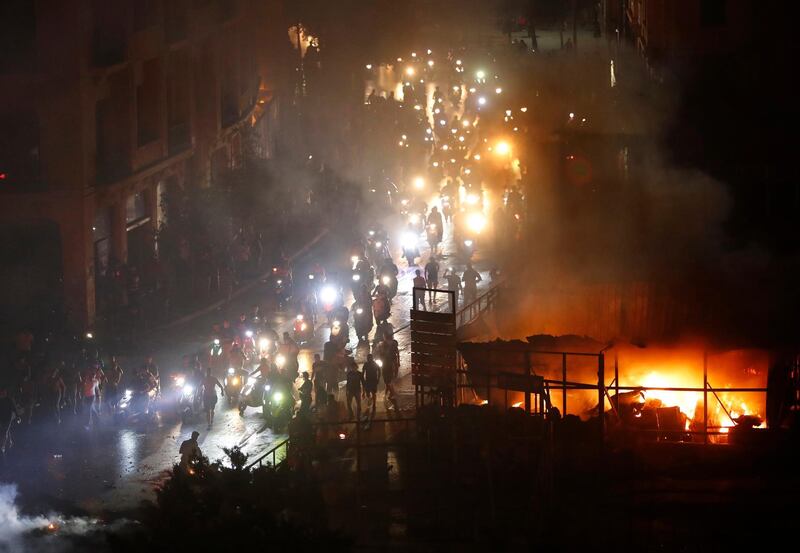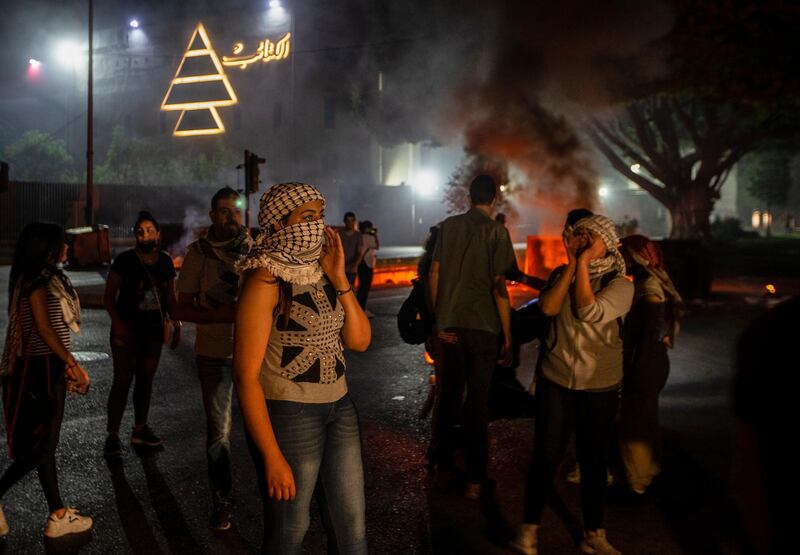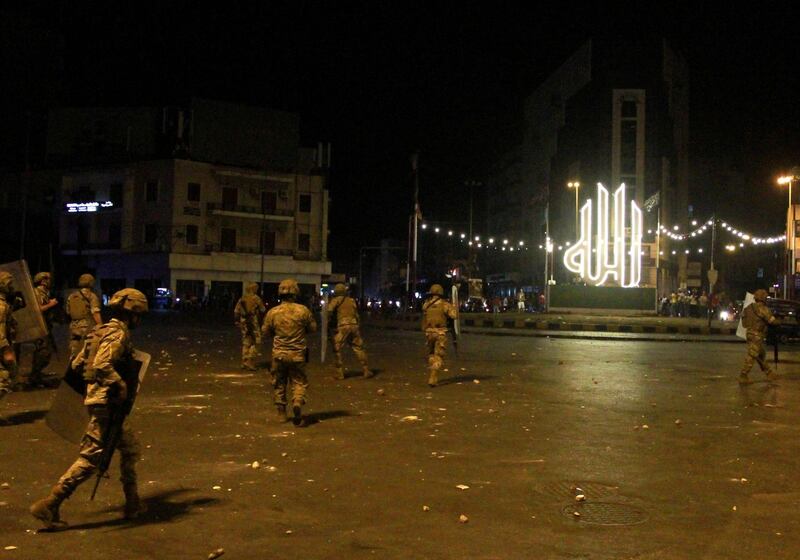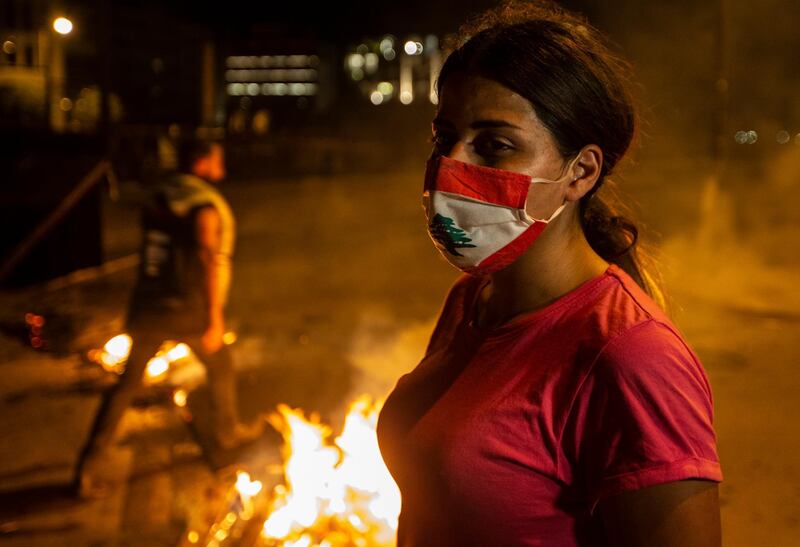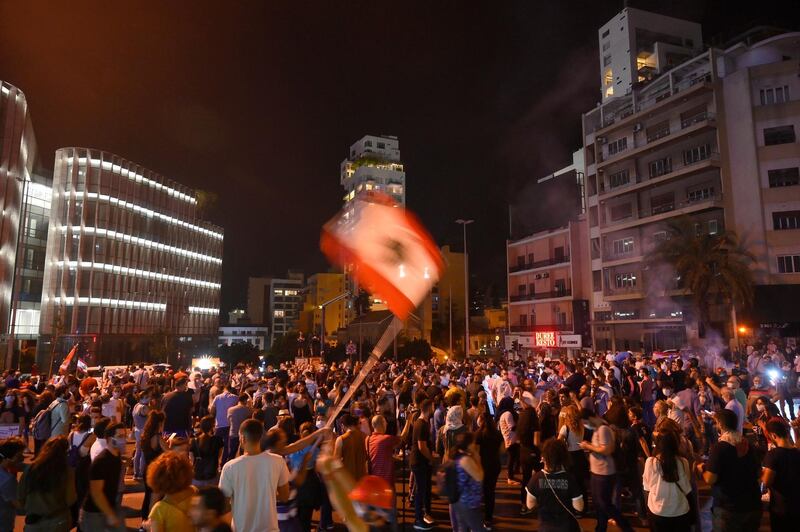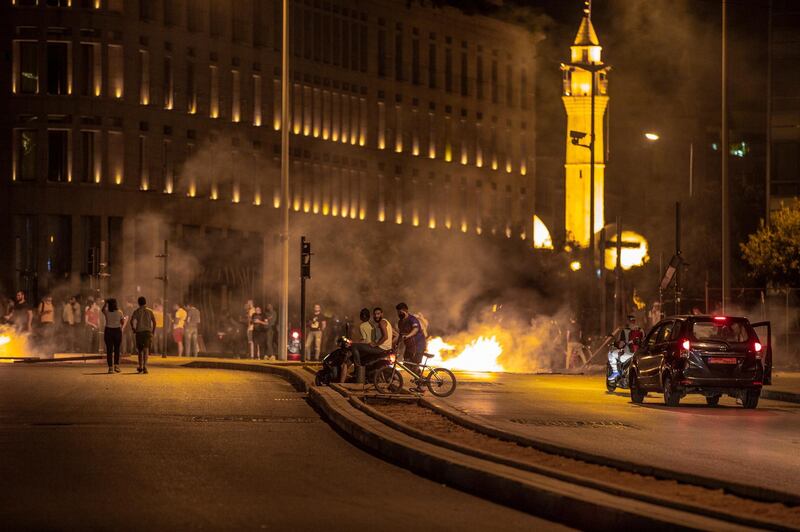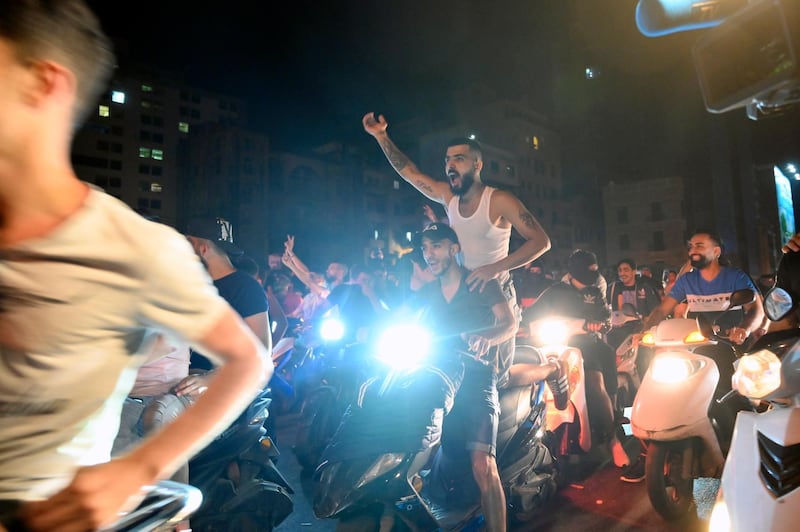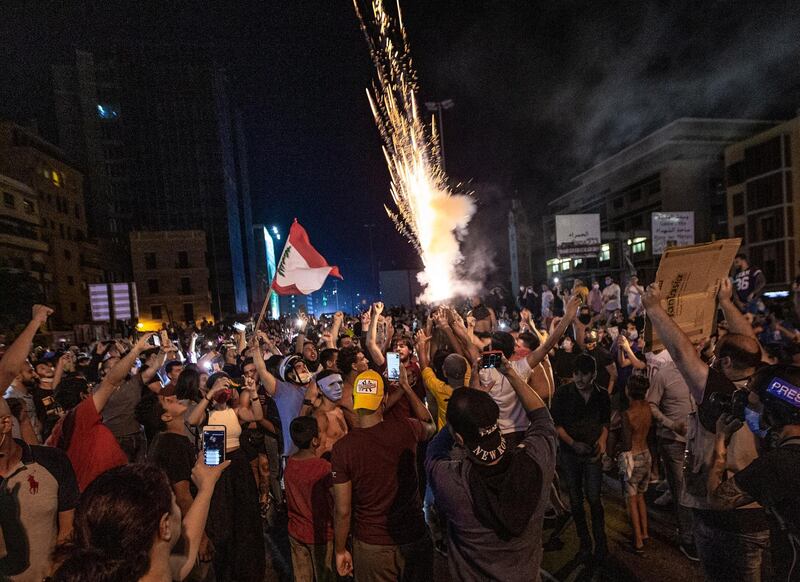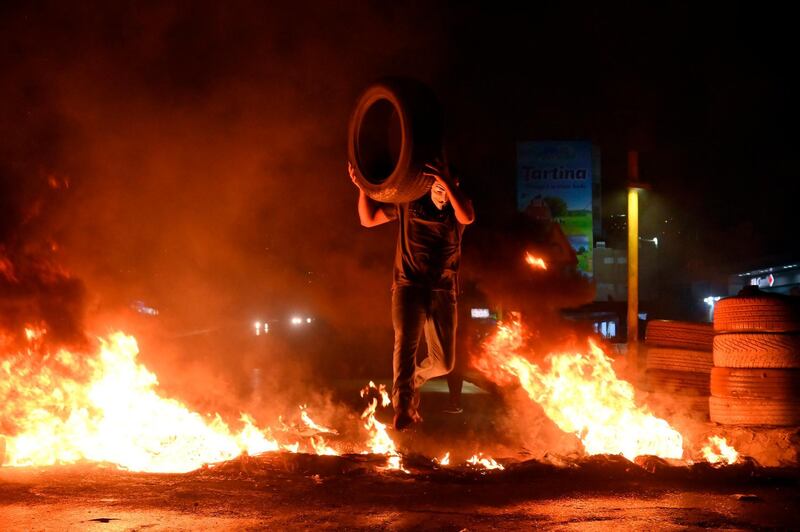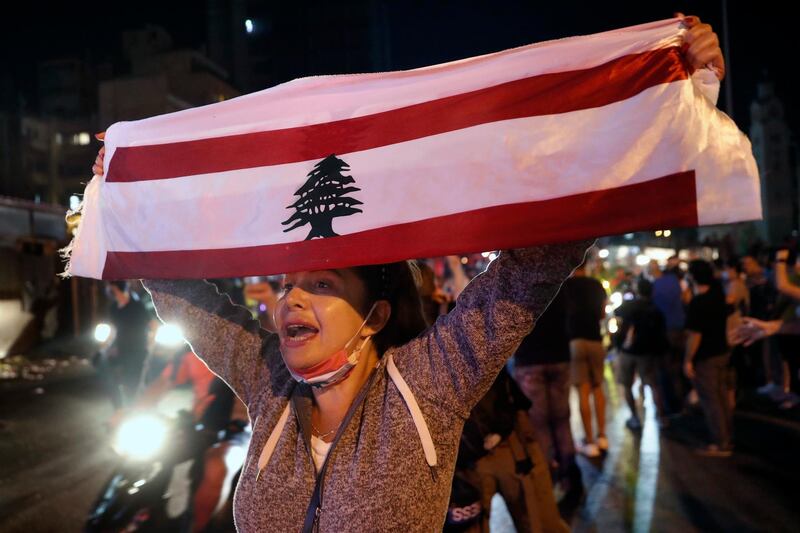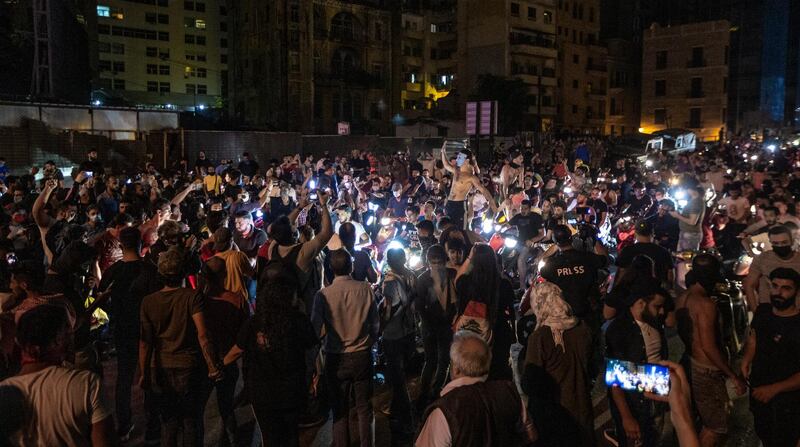Lebanon’s central bank agreed to inject US dollars in the local economy in a bid to curb the local currency’s freefall which sparked violent protests across the country on Thursday evening.
The deputy head of the union of money changers in Lebanon, Mahmoud Halawi, said an agreement was reached for Banque du Liban “to support basic goods and meet the demands of citizens” with fresh dollars, but did not specify the amount.
Mr Halawi took part in an emergency Cabinet meeting convened by Prime Minister Hassan Diab after thousands of Lebanese took to the streets on Thursday evening to protest over the rapid devaluation of the Lebanese pound on the black market
Mr Halawi added that money changers would stick to sale rate of 3,940 pounds to the dollar. Similar announcements in the past have failed to halt the local currency’s slide.
Money changers went on strike for over a month from late April after several were arrested for manipulating the exchange rate, including the head of the union, Mahmoud Mrad, who was later released on bail. Many remain closed, pushing people to change money on the black market.
Local media questioned the effectiveness of the BDL's response. "This raises the question of how long the central bank will continue to provide liquidity to the local market," wrote local newspaper The Daily Star. "Its stated $22 billion reserves have a great deal of demand on them from other sectors, and are needed to guarantee essential imports worth $6 billion annually."
Speaking shortly after meeting President Michel Aoun and Mr Diab, Parliament Speaker Nabih Berri said that “it was agreed with President Aoun and President Diab to reduce the exchange rate of the dollar against the lira from today to under 4,000 Lebanese pounds to arrive at 3,200, but that will not be effective before Monday.”
“The procedures were agreed during the Cabinet session,” he said, without detailing them.
He dismissed rumours about the dismissal of central bank governor Riad Salameh, an oft-heard demand of protesters. “We need everyone and we do not need to dispense with them,” he said.
The BDL has allowed multiple exchange rates to co-exist in parallel for several months. On Friday, local newspaper L'Orient-Le Jour reported that the central bank had raised the exchange rate for cash withdrawals via money transfer companies from 3,200 pounds to 3,840 pounds to the dollar. The companies have not been allowed to hand over dollars to clients for weeks, even if the transfer was made in the American currency from abroad.
In a throwback to nationwide protests that started last October over the country’s economic crisis, protesters blocked roads with burning tyres and rubbisg, clashed with security forces and torched a branch of the central bank in the northern city of Tripoli on Thursday evening.
Civil Defence was unable to use its trucks to extinguish fires set by protesters because they had run out of fuel, the LBCI television station reported. Local media have reported in past weeks that the country may soon suffer from fuel shortages as the government struggles to pay for imports.
The devaluation of the Lebanese pound was triggered last year by a cash crisis in dollars, which have become increasingly hard to find. Though one dollar is officially worth 1507.5 Lebanese pounds, the American currency was reportedly sold for around 5,000 Lebanese pounds on Thursday.
On Friday afternoon, the state-run National News Agency reported that several roads in north Lebanon had been closed by protesters, including in Tripoli.
In the southern city of Saida, protesters set up tents in the city's main square, state news agency NNA reported.
“Money changers closed their shops in … Saida because of the high exchange rate of the dollar, claiming they are unable to adhere to the official price set by their union,” it reported.
In the eastern city of Baalbek, most shops and supermarkets were closed on Friday in protest over the high price of the dollar “and the losses incurred as a result of the manipulation of the exchange rate", NNA said.
